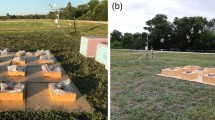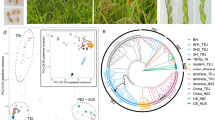Abstract
The maize weevil (Sitophilus zeamais) and rice weevil (Sitophilus oryzae) are two of the most damaging insects for stored grains, and are characteristic species of ancient Japan. Both species and the granary weevil (Sitophilus granarius) are common elsewhere in the world, but the natural distribution of maize and rice weevils is restricted to the Old World^1^. Japanese archaeological records contain a few maize weevil fossils after the Middle Yayoi period (ca. 2000 aBP)^2^. However, since evidence of weevils was discovered as impressions in Jomon potsherds in 2004^3^, many weevil impressions have been found. The oldest is from the Late Jomon (ca. 4000 to 3200 aBP). These findings and other archaeological evidence suggest that the maize weevil invaded Japan from Korea, accompanying the spread of rice cultivation^4^. However, in 2010 we discovered older weevil impressions dating to ca. 9000 aBP. These specimens are the oldest harmful insects discovered from archaeological sites around the world. The new discovery is valuable for future entomological research because such specimens are absent from the fossil record. It is also archaeologically and culturally interesting because this provides evidence of harmful insects living in Jomon villages. However, the new discovery raises the question of what these weevils infested: did cereal cultivation exist 9000 years ago? We have no persuasive answer, but hope one will be provided by future interdisciplinary collaborations among geneticists, entomologists, and archaeologists.
Similar content being viewed by others
Article PDF
Author information
Authors and Affiliations
Corresponding author
Rights and permissions
About this article
Cite this article
Obata, H., Manabe, A., Nakamura, N. et al. New discovery of the oldest maize weevils in the world from Jomon potteries, Japan. Nat Prec (2010). https://doi.org/10.1038/npre.2010.4407.1
Received:
Accepted:
Published:
DOI: https://doi.org/10.1038/npre.2010.4407.1



